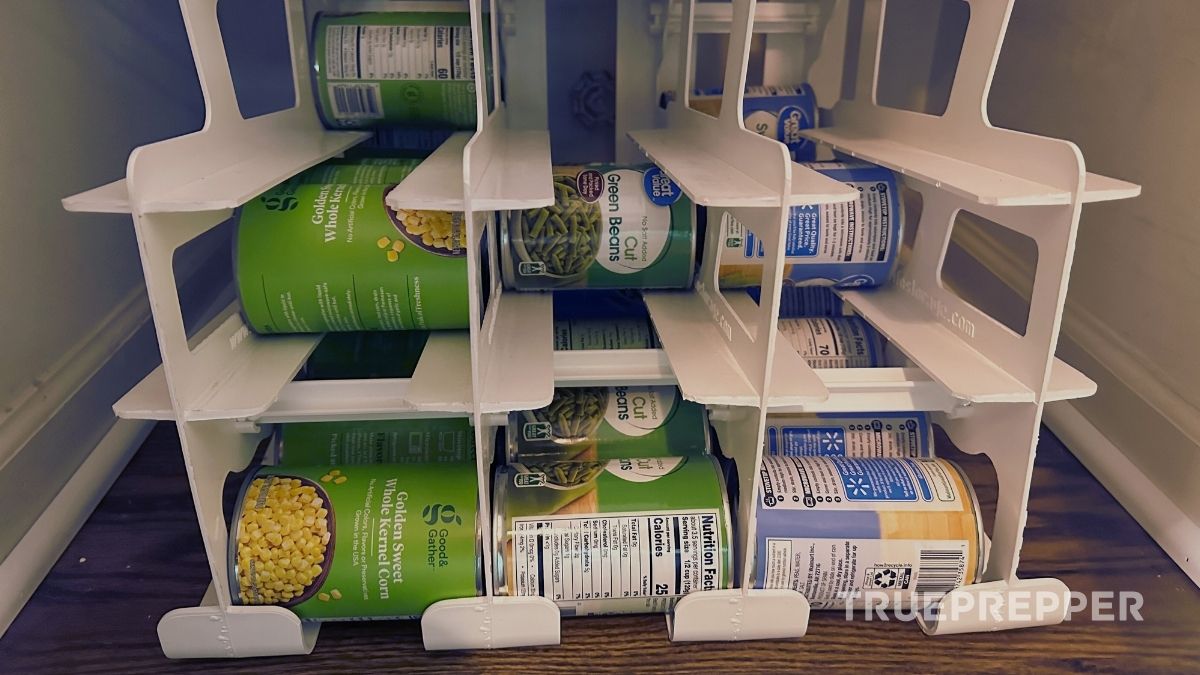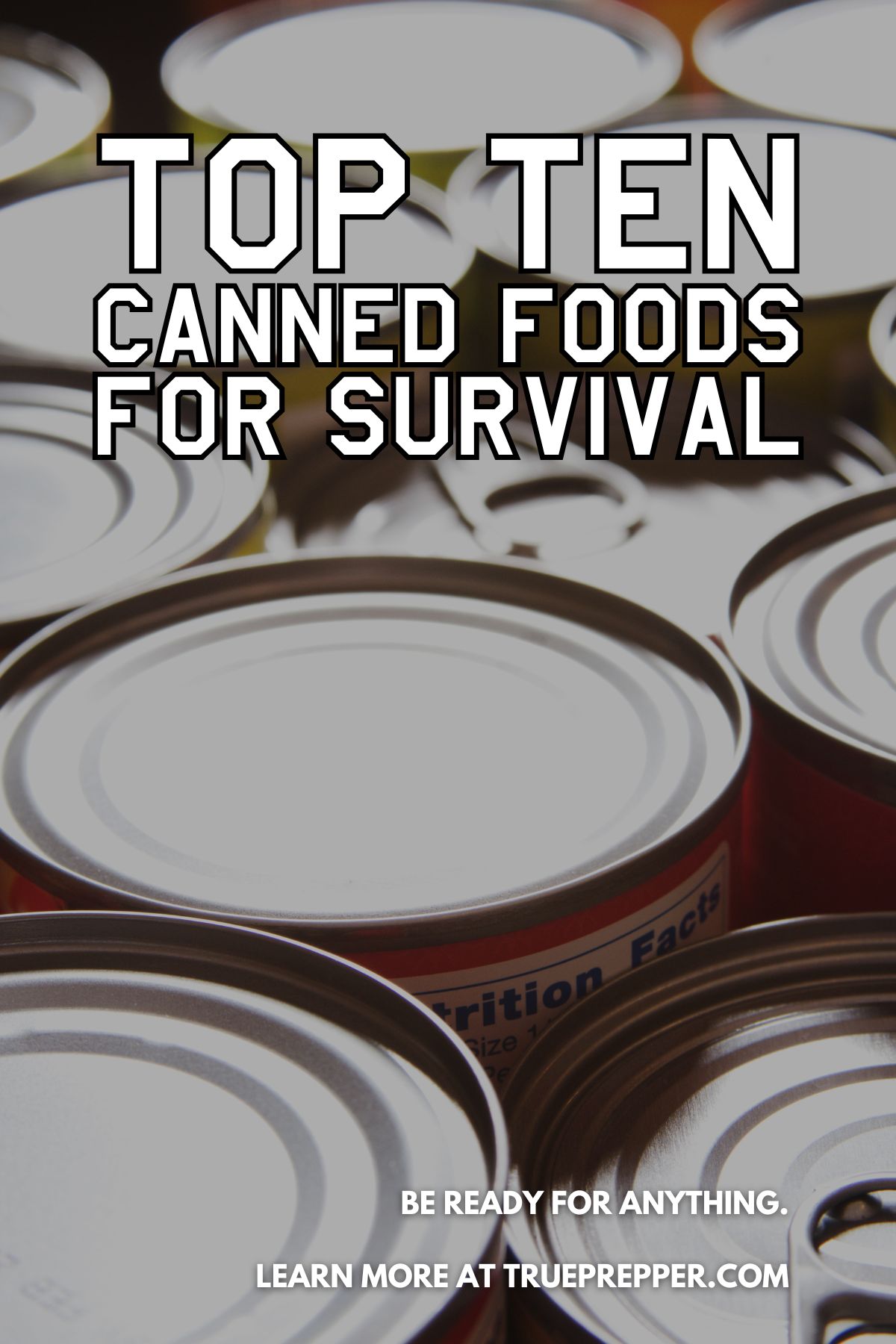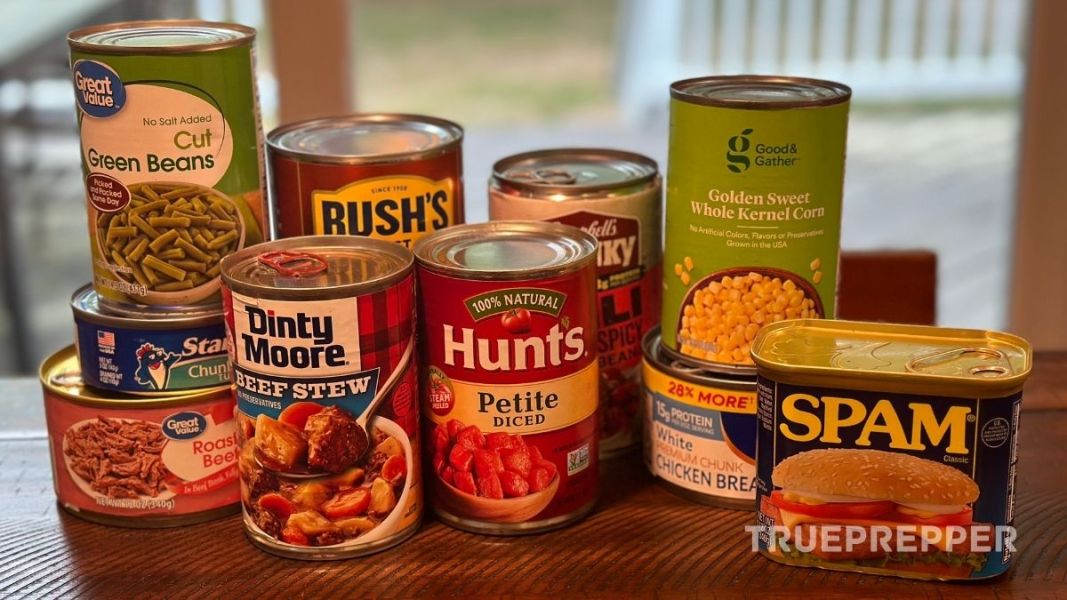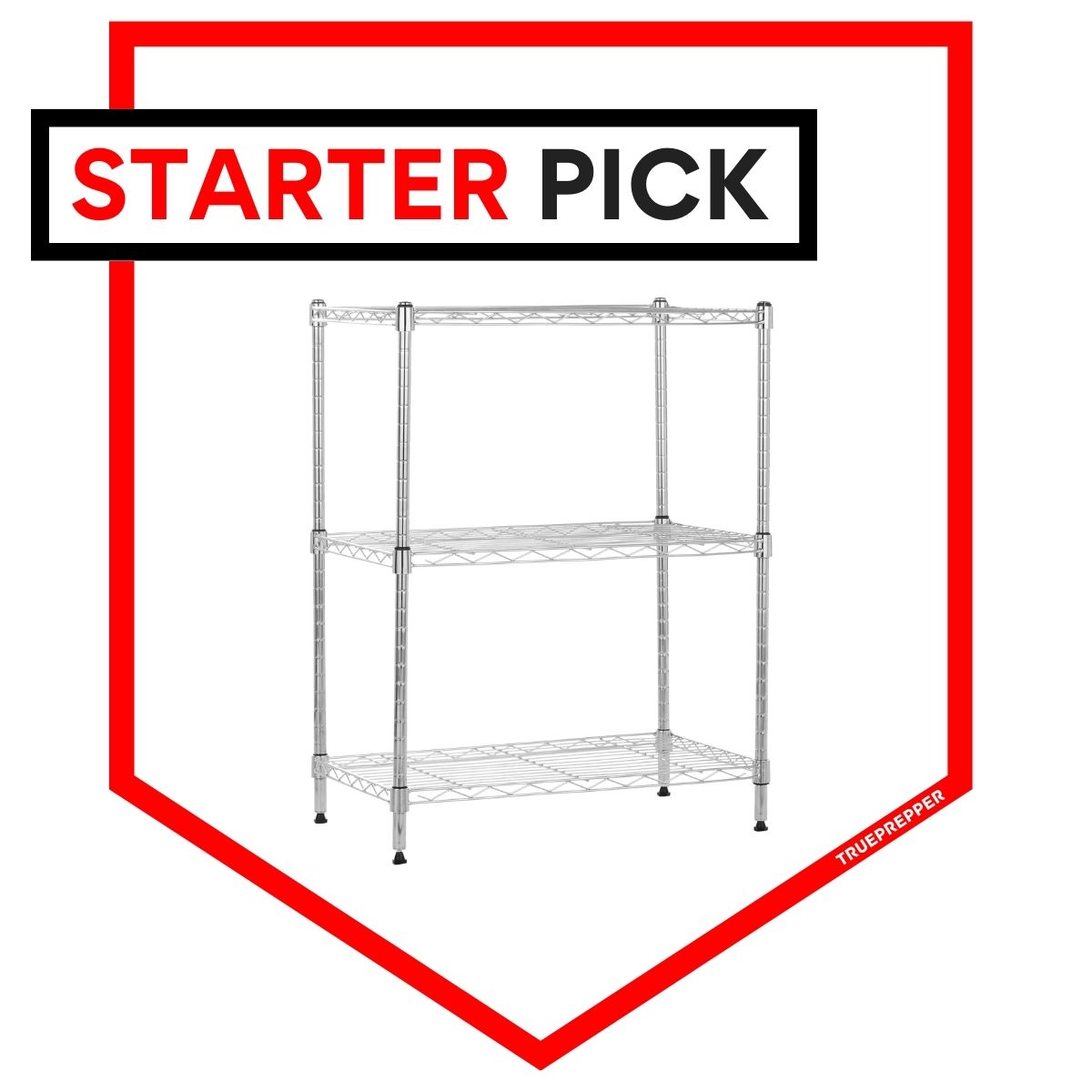The 10 Best Canned Foods to Stockpile for Survival
This is an updated article on the best canned food to stockpile. Our first article was several years ago, and we will continue to update this article as we continue to examine canned food’s nutritional content and shelf life, and as more varieties become available.
In the world of long-term food storage, canned food still stands as one of the best options. Canned food is widely available, easy to store, has a long shelf life, and is typically cheap. There is a wide variety so you can find the best canned foods for your crowd at home based on their taste buds and the nutritional value of what you are storing.
Dehydrators, freeze-dryers, and vacuum seals are great for food storage but store-bought canned foods have one thing on all of them: they are simple. One of the easiest ways to begin a food-storage plan is to simply buy a few extra canned goods at each trip to the grocery store. This method, called backstocking, can help you build an initial food storage supply. Later, once you add in more bulk goods, these can still serve to add variety and nutritional value to your survival kit.
Contents (Jump to a Section)
The 10 Best Canned Foods to Stockpile
Canned foods are usually one of the first things people get when they are starting off with their food stockpile. Cans are extremely cheap and easy to accumulate on regular shopping trips and have a massive shelf life when stored properly. Getting the right mix of cans based on your needs can be tricky, so we highlight the best canned foods to stockpile below based on calories, macronutrient content, and meal variety.
We focused on grocery-available canned foods to keep it simple, which are usually smaller. Larger cans, like #10 cans have their place in preparedness but these low serving-size cans are easier to find and are excellent for growing your food stockpile steadily. Let’s get to the canned food list:
Diced Tomatoes
We use diced tomatoes to make salsa with our homegrown peppers, so this is something that we can backstock easily in the pantry. Very cheap, versatile, and widely available.
Nutrition-wise they aren’t impressive, with only 105 calories per 15-ounce can and not much protein, carbs, or fat. It does have some potassium and fiber but it’s really in our canned food stockpile for the versatility it brings to mealtime. Most of the vegetables I like to store are complementary to the more efficient meat options.
Quick tip: the acidity in tomatoes can eventually break through cans, so be sure to rotate your stockpile using FIFO.
Corn
Corn goes great with all sorts of meals. The kids love it and it is an easy way to add a vegetable to the table. My 15-ounce cans have 210 calories each, which is pretty good for a vegetable. It adds plenty of fiber and potassium which is nice for a side.
Green Beans
Green beans have been a long-time canned staple. Homesteaders may prefer growing and canning their own, but getting them from your local grocery store is quick and easy.
The 15-ounce cans I stockpile have 88 calories each with just a few carbs (very little protein and no fat). It does have Calcium, Potassium, Iron, and Fiber making it worth mixing into your emergency meals.
Baked Beans
Rice and beans are typically stored dry and do not need to be canned, but baked beans are just too good to pass up. They can add much-needed variety to your food stash and are usually a family favorite.
Because the kids like them, we stash the baked beans in the big 28-ounce can with 900 total calories. They have 5% protein by weight, 1% fat, and a whopping 23% carbs (all that added sugar).
Tuna in Oil
I actually prefer Tuna in water- but in an emergency calorie content is king. The oil adds valuable calories instead of water. Stashing too much tuna- or any fish for that matter- could be problematic long-term with mercury content.
The calories are only listed with the vegetable oil drained, but even that gives you 160 calories in a little 5-ounce can.
Chili with Beans
Chili is just one of those feel-good foods that happen to be great for emergencies. It is no surprise that it is one of my favorite MRE entrees. Luckily, it comes in a can and is dirt cheap.
The one I like and stock has 540 calories per 19-ounce can. The macros aren’t very impressive for a can with meat in it, but that doesn’t stop me from making a meal of it. It has a makeup of 5% protein by weight, 3% fat, and 12% carbs.
Roast Beef
Protein power! Canned roast beef is a great emergency entrée. Just heat and eat. The one I stock brings a balance of 400 calories in a typical 15-ounce can with 4% protein by weight, 4% fat, and 7% carbs.
It’s especially handy to have around if you keep any sort of hardtack (a type of survival bread) on hand since it’s like eating beef stew over biscuits.
Beef Stew
Similar to the canned roast beef above, but even a little more versatile. You can splash other ingredients into the stew for different meals using the same building blocks.
Usually packing 385 calories per can, this option is focused more on the macros. It has 24% protein by weight (70g per can!), 3% fat, and zero carbs. It’s just beef in beef broth in the can so it’s pretty simple and a great ingredient for emergency meals.
Chunk Chicken Breast
My wife uses this to make buffalo chicken dip and it’s crazy delicious. This lets us backstock our pantry with these cans pretty easily. I might get in trouble for sharing her secret, but it’s just Frank’s Red Hot chicken dip recipe and she’s won a few neighborhood and office competitions with it.
It typically has 240 calories per can (depending on the brand/flavor), and lists a shelf-life of at least 4 years out (more on that below). It is a whopping 18% protein by weight, 2% fat, and 0% carbs making it a great protein option.
Hormel Spam
Good old SPAM. This Shoulder of Pork and HAM is about as versatile as it gets when it comes to canned meat. It has been a food storage staple for a long time and should not be surprising that it made the list.
Traditional SPAM has 1080 calories per can, an easy pop-top lid, and impressive macros: 13% protein by weight, 28% fat, and 2% carbs. The shape of the cans allows for efficient nesting and stacking as well since they are rectangular.
Canned Food Expiration
Holding canned foods past their printed expiration date is usually not a problem. One of the main reasons for expiration dates is that the taste is affected. There can be a few telltale signs when canned food is no longer good to eat:
- Bulging cans. This is an indication of temperature problems during storage or bacteria growth. Either way, don’t eat it.
- Leaking cans. If a can is dripping, oozing, seeping, etc- don’t eat it. A compromised canned good can go bad quickly.
- Open cans. If you open a can, plan to use it all. Resealing a can is difficult and does not trap sterile air back in the can. If a can has a hole in it and is already slightly open, don’t eat it.
Cans that don’t meet the cut for any of these flags aren’t completely useless: use them for target practice.
How to Store Canned Food
Canned food should be stored in a cool, dry place, away from direct sunlight and sources of heat. The pantry or a cabinet are usually the best options. Avoid storing canned food in damp or humid areas, such as a basement or garage, since this can make the cans rust or get damaged.
Make sure your shelves or racks are strong enough to hold cans- they can get heavy quickly!
We go over the best storage shelves for preppers in one of our reviews, but most people can easily find room in their current shelving set up or pantry.
FIFO Storage
Also, it’s a good idea to keep canned goods organized and rotated so that the oldest cans are used first. The method of doing this is called FIFO (First In, First Out) and is the best way to make sure your canned food shelf life is the longest. One interesting option is a FIFO can rolling rack. I use one of those to hold the canned staples we use the most often, and it easily slid into dead space I had on my pantry floor.

Buy Canned Foods You Like
You know your and your family’s preferences better than anyone does. Everyone in my family will gladly chow down on any of the canned goods listed above- especially the kiddos.
Don’t get into an emergency situation just to find out that nobody likes your emergency food.
Canned foods make it easy since they are usually something that your family is familiar with already. It can be surprising just how big of an impact something like a familiar meal can have during an emergency.
What Canned Foods Have the Longest Shelf Life?
Canned foods that have a high acid content, such as tomatoes, fruits, and pickled vegetables, typically have a shorter shelf life of 12-18 months. Low-acid canned foods, such as meats, fish, poultry, and most vegetables, can last for 2-5 years or even longer if stored properly.
Some examples of long-shelf-life canned food include:
- canned meat and fish (tuna, salmon, chicken, beef, etc.)
- canned fruits and vegetables (peaches, green beans, corn, etc.)
- canned soups and stews
- canned beans and legumes (black beans, lentils, chickpeas, etc.)
- canned juices
Even though they have a long shelf life, canned food should be inspected for dents, leaks, swelling, or other signs of damage before you eat them.
Can You Survive Off Canned Food?
It is possible to survive off of canned food, but it is not ideal as a long-term diet. Canned foods are often high in sodium and may lack some important nutrients that are found in fresh foods. Eating a diet that is primarily made up of canned foods may lead to deficiencies in essential vitamins and minerals, such as vitamin C and calcium. Additionally, consuming a diet high in sodium can lead to high blood pressure and other health issues.
It is recommended to have a balanced diet that includes a variety of fresh fruits, vegetables, lean proteins, and whole grains. Canned foods can be a convenient and easy way to add variety to your diet, but they should not be the main source of nutrition. If you have to rely on canned food for a long time, try to get a variety of different types of canned food and rotate them to get different types of nutrients. Additionally, you can also add fresh fruits, vegetables, and lean protein to supplement your diet.
Food Items to Stockpile for Emergencies
When stocking food for emergencies, it’s important to choose items that are non-perishable, easy to prepare, and have a long shelf life.
It’s also important to keep in mind that you should store these items in a cool, dry place and rotate them regularly to ensure they stay fresh. And also to check the expiration date and discard expired items.
We go over all of the foods (not just the cans) in our survival food list, showing everything you need to stock your prepper pantry.

The Final Word
Canned foods are easy to find locally and can help boost your survival kit rations. Boost your calories, variety, and nutrition with canned foods. They are inexpensive, which can help any prepper; whether you already have a long-term storage plan or are just starting out.
Here are a few other articles our readers have found helpful:
- The Best Can Opener for Prepping and Survival
- The 10 Best Long-Term Food Storage Containers
- Survival Food List | Pantry Stockpile Plan and Checklist
If we missed any of your favorite canned foods that you keep in your stash, be sure to let us know in the comments below.
Keep exploring, stay prepared, and be safe.
You’ve Been Missing Out
Join the 2+ million preppers that rely on our prepping advice by subscribing to TruePrepper.- Practical guides and tips
- Useful survival giveaways
- Free, forever
- < 0.4% of people unsubscribe




Almost all modern commercially packed canned foods are shelf-stable and will remain edible nearly ‘forever’ if the cans are intact and stored at temperatures comfortable for people. Excessive heat or repeated large changes in temperature are problems, but if you keep your canned food indoors in your living space they will probably last as long as you do.
HOWEVER, the above does NOT apply to “canned” frozen products like concentrated fruit juice or refrigerated products like bread and pastry dough – these products need to be kept at the appropriate temperatures. If kept properly most will last a bit past the “use by” date (especially frozen products, but not nearly as long for refrigerated products). None of the frozen or refrigerated products will last as long as regular shelf-stable canned goods.
Spam now has 14 flavors( The teriyaki one is great. The spicy one Is marinated in Tabasco sauce). The roasted turkey one is actually made from TURKEY. Check out http://WWW.SPAM.COM to learn more about the various flavors
Elbert
🤮 Not exactly a favorite by all but I’m like Mikey. I’ll eat anything.
Did you know that SPAM now comes in FOURTEEN Flavors?
You need to go to it’s website to learn more.
Buba Gump spam, lol
Spamming actual SPAM is the one exception to our spam rules!